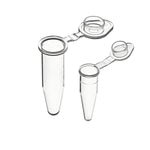You have no items in your shopping cart.

Check out our video for this post on YouTube!
You just purchased your new benchtop centrifuge and want to get the most out of it. Here are some tips on how to perform general maintenance on your centrifuge machines and keep your lab environment safe.
Safety
First and foremost, always follow your lab or institution’s safety protocols and product manuals for different scenarios. In the case of spillage of hazardous material, your safety protocols should guide you on the type of protective gear and kits to be used for the safety of the lab. Ignoring or skipping parts of the protocol will sometimes jeopardize the work safety for you and others. For example, if you accidentally spilled blood while using a blood centrifuge machine and failed to clean it up immediately, you could be exposing various biohazard to the next person using the machine. For general cleaning purposes, your centrifuge’s user manual will also tell you the best cleaning methods for different parts of the machine.
Cleaning
Before cleaning your centrifuge, always make sure your device is turned off and unplugged from power supply and place your centrifuge on a flat and even surface. Accidentally turning on the machine during the cleaning process not only causes harm to the machine, but also poses extreme danger to you.
After making sure the machine is unplugged, start wiping the outside of your centrifuge machine with a damp soft cloth or with some neutral detergent. Service engineer Tom Di Francesco has found that Formula 409 works well on all surfaces for general cleaning purposes and recommends that “care should be taken around some decals, laminated surfaces, and other printed instructions on the panels.”
For the inside of centrifuge, our best recommendation is to follow the manual that comes with the machine, as different centrifuges have different surfaces, such as plastic, ceramic, aluminum or stainless steel. For example, Biofargo’s most popular centrifuges brand, DLab, recommends that you clean the rotor chamber with damp cloth or sponge with a neutral detergent solution with a pH value between 6 to 8 and follow up with a cloth dabbed in 70% ethanol solution to sterilize if needed. Make sure to not to flood the rotor chamber with water or any other liquid as it might cause damage to the centrifuge. To clean rotor bores, test tube brushes are recommended. Always remember to dry the rotor chamber completely after cleaning.
Avoid using harsh chemicals and harsh cleaning supplies like steel wools as they are more likely to cause corrosion. Pay extra attention to metal parts such as hinges, hooks, motors and rotors when cleaning, as “soap suds, phosphoric acid, bleach solutions [and] scrubbing powder are caustic agents. Even stainless steel may show signs of corrosion over time if exposed to them,” according to centrifuge expert Maurizio Merli.
After cleaning your device, make sure to dry it completely then apply a thin layer of anticorrosion oil on your rotor if it is made of metal and some centrifuge lubricant or silicone grease onto drive shaft to make sure that your centrifuge machine operates smoothly.
How often should you clean the centrifuge?
Generally speaking, you should clean your centrifuge machine at least once a week, unless something spilled in the centrifuge, in which case you should clean it immediately. If you are cleaning your centrifuge due to an accidental spill, make sure to clean the entire machine, not just the affected area. If you are using ventilated centrifuge, hazardous sample could be spread into the air during the centrifuge process and contaminate the lab environment (this is not to say you do not need to clean the centrifuge if you are using a refrigerated centrifuge). Another danger for not clearing spill immediately is that the spill might be spun into various parts of the machine, making it much harder to clean in the future, causing unnecessary damage to the machine, and reducing your product life span.
According to Di Francesco, it is important to keep a centrifuge maintenance and cleaning log book, especially if the centrifuge is shared. Having someone in charge of monitoring the state of the centrifuge seems like tedious work but can save you a lot of hassle and money in the long run.
Inspecting the Centrifuge
Even with rigorous cleaning routine, all centrifuges will still need to be repaired or replace. Regular check-up of the machine can ensure safety of you and the lab. One significant sign that you need to inspect your centrifuge is sound. If your machine makes loud, unusual sound during the centrifuge process, it is recommended to stop the machine immediately, wait for the spin to stop completely, then open the lid, and check for the balance of the centrifuge first, as imbalance can cause severe damage to the centrifuge machine. If everything is perfectly balanced, check for small items that might have been left in the rotor such as loose caps, spills, and broken centrifuge tubes. If everything still seems up to code, then it is time to call for a professional to inspect your machine for interior parts damage.
Another easier thing to spot during your inspection is corrosion. Corrosion usually comes in gray or brown color and can indicate much bigger issue than it seems. If you spot a corrosion on your rotor and leave it unattended, it will eventually lead to cracking of the surface and will break during high g-force centrifuge procedure, not only damaging the machine but potentially the users as well.
During the inspection procedure, if you find any uncertainty, you should call a centrifuge product professional to perform maintenance on your machine in order to prolong the product’s life cycle.
Take away
No matter if you are a lab veteran or someone who just started their lab career, it is always crucial to make sure that your work environment is safe and clean. Cleaning and maintaining your centrifuge machine might seem like an insignificant and trivial task, but skipping it not only puts extra financial burden on the lab, it also has the potential to inflict physical harm.






















